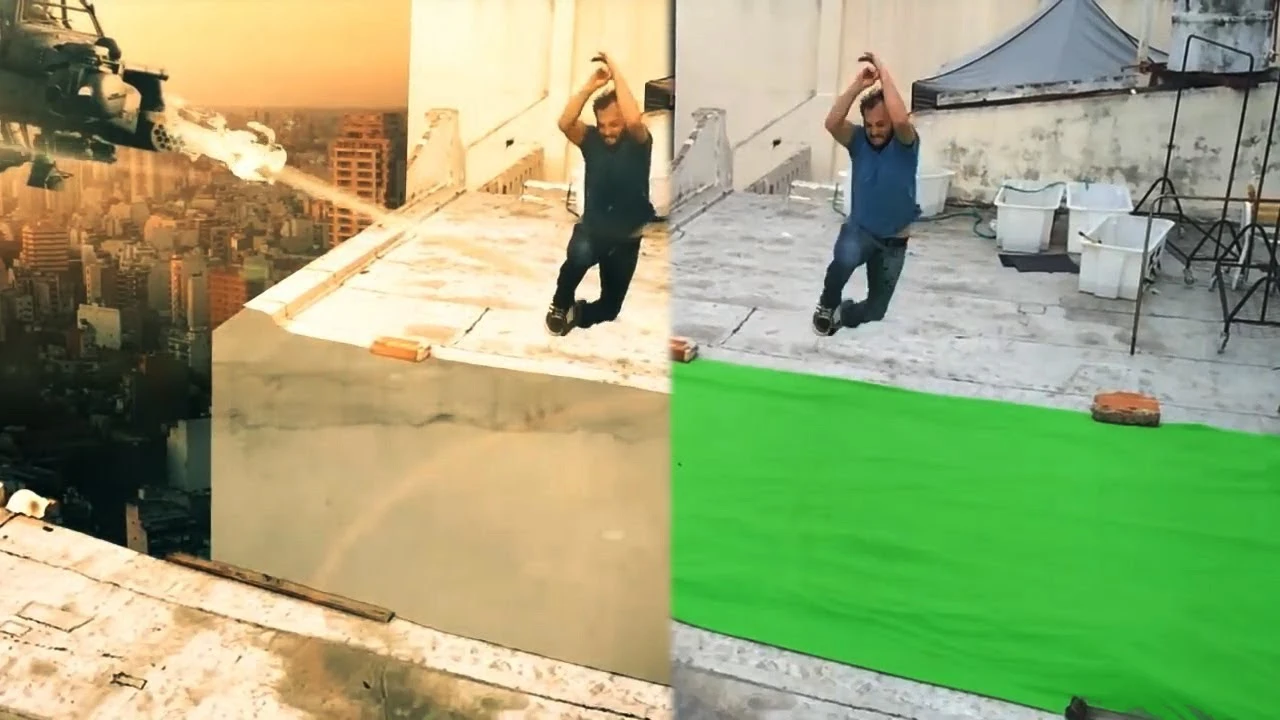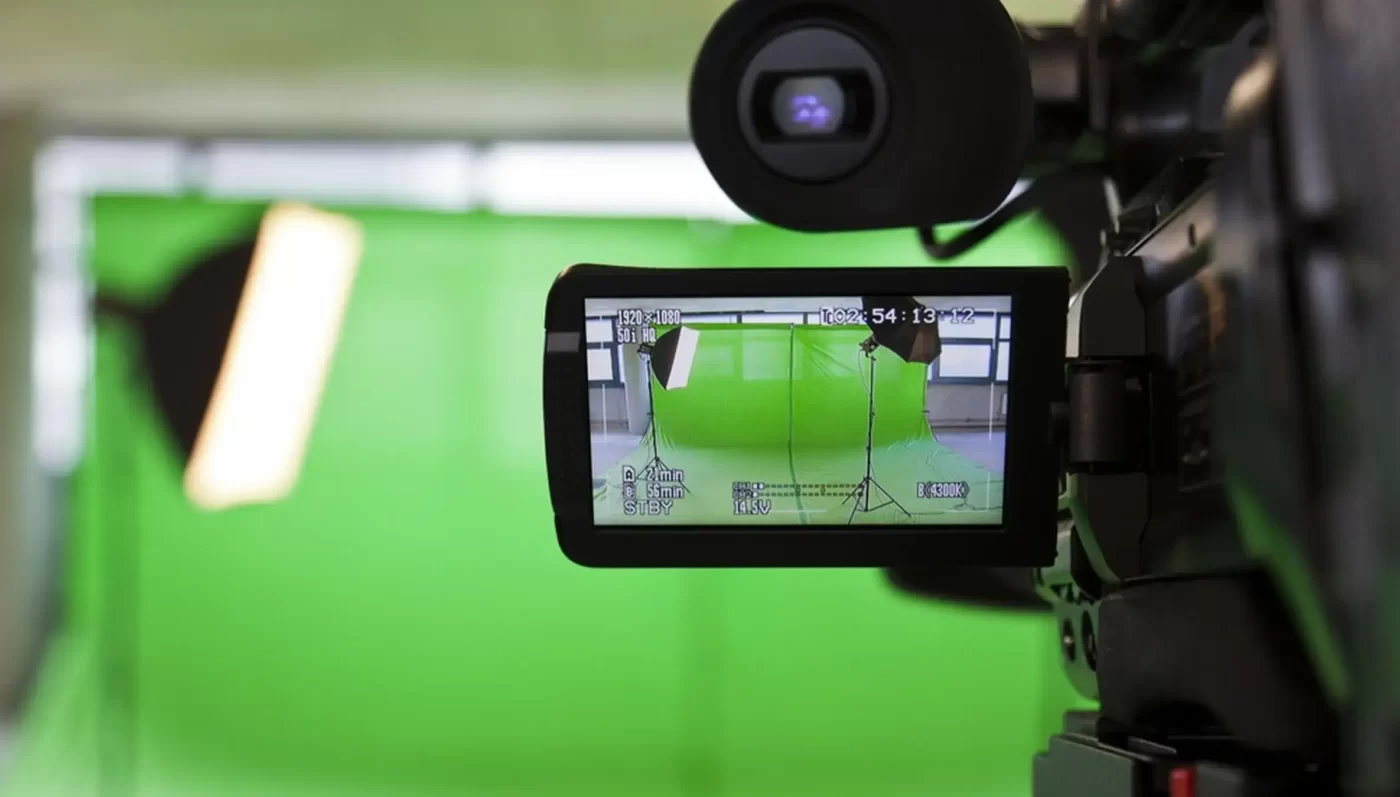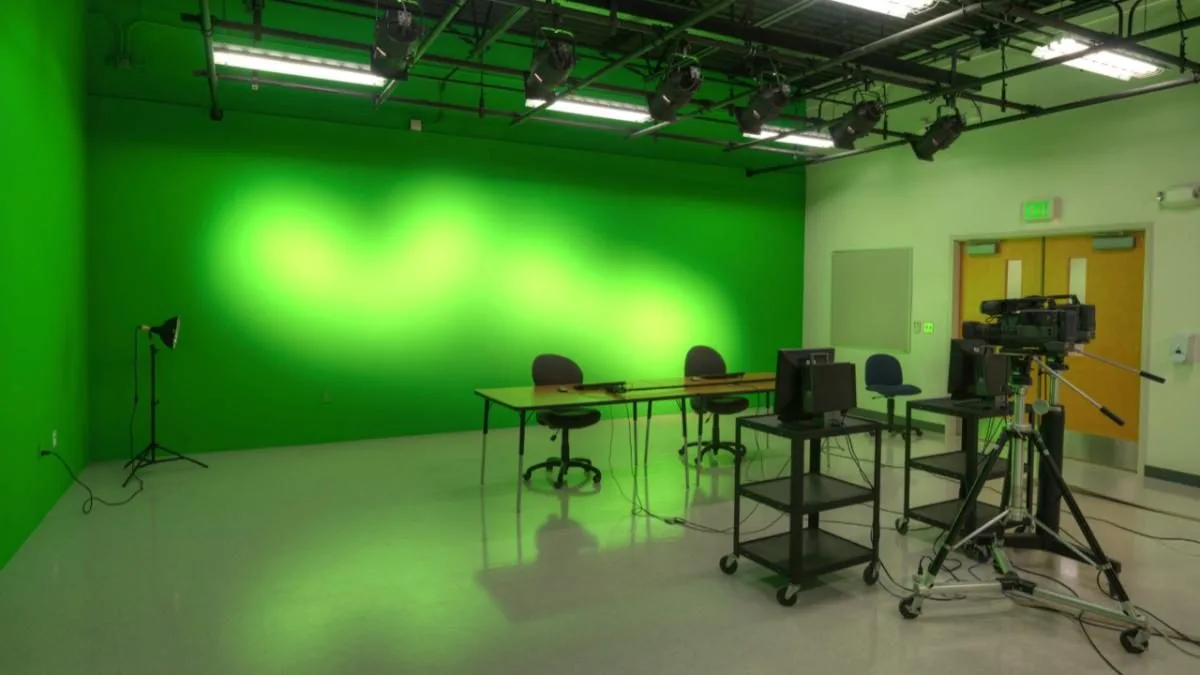Information
Why are Green Screens Green?
Are you ever in a state of wonderment as to why green screens are invariably green? Whether you're just delving into the realm of video editing or merely inquisitive about the technical workings of your preferred movies and television shows, grasping the logic behind green screens can be a mind-boggling experience. Thus, what distinguishes green as the go-to color for chroma-keying, and what sets it apart from other hues? In this blog post, we shall immerse ourselves in the science that underpins green screens and examine some of the reasons why they have become ubiquitous tools in contemporary media production.

- The Science of Chroma Keying: Why Green Screens?
- The Importance of Background Isolation in Video Production
- Green is the Furthest Color from Skin Tone
- How Modern Digital Cameras Help Green Screens Shine
- Why Green Screens are the Go-To Choice
- An Actor's Guide to Avoiding Green Screen Pitfalls
- Human Perception and the Reasoning behind Green Screens
- Green Screens for Seamless Transitions
- The Importance of Motion Blur in Green Screen Filming
- Industry Standards: How Green Screens Protect Actors and Achieve Results
The Science of Chroma Keying: Why Green Screens?
As a seasoned video production specialist, I can bear witness to the paramount significance of utilizing a green screen for chroma keying in the video production workflow. The science behind it is quite straightforward: the color green is elected because it stands out the most from skin tones, making it simpler to differentiate the actor or subject from the background. This, in turn, makes it easier to remove the green screen during post-production using video editing software. Moreover, contemporary digital cameras are better equipped to handle the color green, yielding clearer and more precise keying outcomes. Despite other color alternatives, green is still the preferred choice in the industry because it is the most widely available color and it delivers seamless transitions for the viewer. As an actor, it is crucial to avoid donning green attire on set to steer clear of being mistaken for part of the background. Overall, comprehending the science behind green screens and how they function is imperative for attaining top-notch results in video production.
The Importance of Background Isolation in Video Production
As an expert in the field of video production, I cannot emphasize enough the criticality of appropriately isolating the background in our footage. Green screens enable us to seamlessly swap out the background, but it's not merely about the technology. It's also about the quality of the final output. Inadequately isolated backgrounds can impede the audience's immersion and detract from the story that we intend to convey. By utilizing green screens, we can cleanly capture and isolate the footage and subsequently integrate any necessary background images during the post-production stage. This approach not only allows for creative flexibility but also guarantees that the ultimate output is of the utmost quality. To put it succinctly, background isolation is a pivotal aspect of video production, and green screens offer us the necessary instruments to actualize our artistic vision.
Green is the Furthest Color from Skin Tone

As we've discussed, the reason green screens are green is that green is the furthest color from skin tone. This is crucial in chroma keying, as it allows for the background to be completely isolated without interfering with the subject or creating unwanted artifacts. The lack of green coloring in human skin tones ensures that an actor in front of a green screen can be easily extracted and placed into a different setting. Additionally, the high luminance of the color green reflects more lighting, making it easier to light the background without breaking the budget. All of these factors support the notion that green is the go-to color for green screens in video production. By using this principle, it's possible to create seamless and realistic transitions between different scenes or settings, ensuring that the audience is fully immersed in the story being told.
How Modern Digital Cameras Help Green Screens Shine

As a video producer, I know the importance of using the right equipment to achieve the best results. When it comes to green screen filming, modern digital cameras have significantly improved the process. With advanced sensor technology, cameras today can capture a wider range of colors and tones, allowing for better separation of the subject from the green screen background. This results in cleaner, more seamless keying during post-production. Additionally, some cameras even have specialized green screen modes that optimize color and exposure settings for the best possible outcome. When combined with other important factors like lighting and proper staging, the use of modern digital cameras can truly make your green screen footage shine.
Why Green Screens are the Go-To Choice
Why Green Screens are the go-to Choice? Well, it's simple. Green screens are the industry standard for a reason. They offer consistent and reliable results, making them perfect for professional filmmaking. With a solid green background, we can easily isolate the subject from its environment using chroma keying. Additionally, green is the furthest color from skin tone, making it easier for editors to separate the individual from the background while keeping detailed features like hair and eyelashes intact. It's not just about achieving a seamless transition from one background to another; it's also about achieving a video that looks as natural and polished as possible. With a vast range of benefits, there's no surprise that green screens remain the go-to choice!
An Actor's Guide to Avoiding Green Screen Pitfalls

As an actor, it's important to be aware of the potential pitfalls that come with working on a green screen. First and foremost, pay attention to your distance from the screen. Getting too close can cause reflections and unwanted green lighting. Additionally, be mindful of your clothing choices and avoid wearing anything that may have green tones. This can cause the chroma-keying process to blend parts of your body or clothing into the background, resulting in a less-than-seamless final product. Lastly, remember that proper lighting is key. Avoid over-exposing the green screen, as this can lead to fuzzy edges and an overall unprofessional look. By following these tips and being aware of the potential pitfalls, you can ensure that your green screen work looks polished and seamless.
Human Perception and the Reasoning behind Green Screens
As someone who works in the video production industry, the topic of human perception and green screens has always fascinated me. Our eyes see green with ease because of how light reaches our retinas, and this is why chroma keying with green screens has become the industry standard. Green is the preferred color even with non-Bayer filter cameras because it has lower noise than red or blue.
Beyond the science of it all, green screens also help us create seamless transitions in our video production. By isolating the subject from the background, we can easily replace the green screen with any background we want in post-production. It's a technique that can make a huge difference in the final product.
As actors, it's important to know how to work with green screens to avoid any pitfalls like casting shadows or wearing green clothing that can interfere with the chroma-keying process. But we can't forget about the importance of motion blur in green screen filming, which helps make the transition from the subject to the background more natural and believable.
Overall, green screens are an incredibly powerful tool in video production, and it all comes down to our perception of light and color. Choosing the right background, properly lighting the subject, and using the right camera settings are all important factors in achieving the desired effect. No wonder why green screens have become a go-to choice in the industry.
Green Screens for Seamless Transitions
When it comes to video production, seamless transitions are key to a professional and polished final product. This is where green screens truly shine. By using a green screen and chroma key technique, we can easily swap out the green background with another image or video, creating a seamless transition between shots. This technique allows for endless creative possibilities and elevates the overall quality of the video. However, it's important to remember that proper lighting and camera settings are crucial for a successful green screen transition. As an actor, it's also important to be mindful of movements and spacing to ensure a seamless and believable transition. With a little bit of practice and attention to detail, green screens can truly elevate your video production game.
The Importance of Motion Blur in Green Screen Filming
When it comes to filming with a green screen, keeping motion blur in check is crucial. As mentioned earlier, motion blur can make it difficult to achieve sharp edges, which is the whole point of using a green screen, to begin with. That's why it's important to shoot with a higher shutter speed to eliminate motion blur and help with the chroma key effect. But it's not just about the technical aspects of filming; strategically placing your subject and lighting them properly are also key components in achieving a successful green screenshot. By following these steps, we can ensure that our videos are free of motion blur and that the chroma key effect is seamless.
Industry Standards: How Green Screens Protect Actors and Achieve Results
Industry standards dictate the use of green screens in film and television production for their ability to protect actors and achieve optimal results. With chroma keying technology, the green backdrop allows for easy removal of the background in post-production, enabling limitless opportunities for adding special effects and animation. Additionally, using green screens allows for seamless transitions between scenes and shot locations, enhancing the viewer's experience. From a safety perspective, green screens protect actors from potentially dangerous elements during filming, such as extreme weather conditions or hazardous locations. By placing actors in controlled environments, green screens not only ensure their safety but also improve the quality of the final product. As such, industry professionals rely on green screens as a reliable and practical tool in their creative process.